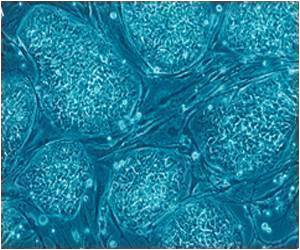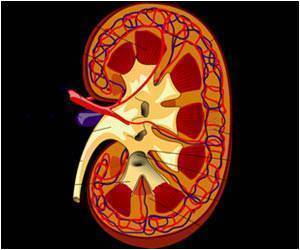Channelrhodopsins, light-activated ion channels that can, with the flick of a switch, instantaneously turn on neurons in which they are genetically expressed, has been developed nearly a decade ago.

The new structurally engineered channel at last gives neuroscientists the tools to both activate and inactivate neurons in deep brain structures using dim pulses of externally projected light. Deisseroth and his colleagues published their findings April 25, 2014 in the journal Science. "We're excited about this increased light sensitivity of inhibition in part because we think it will greatly enhance work in large-brained organisms like rats and primates," he says.
First discovered in unicellular green algae in 2002, channelrhodopsins function as photoreceptors that guide the microorganisms' movements in response to light. In a landmark 2005 study, Deisseroth and his colleagues described a method for expressing the light-sensitive proteins in mouse neurons. By shining a pulse of blue light on those neurons, the researchers showed they could reliably induce the ion channel at channelrhodopsin's core to open up, allowing positively charged ions to rush into the cell and trigger action potentials. Channelrhodopsins have since been used in hundreds of research projects investigating the neurobiology of everything from cell dynamics to cognitive functions.
A few years later came the deployment of halorhodopsins, light-sensitive proteins selective for the negatively charged ion chloride. These proteins, derived from halobacteria, provided researchers with a tool for the light-controlled inactivation of neurons. A major limitation of these proteins, however, is their inefficiency. Unlike channelrhodopsin, halorhodopsin is an ion pump, meaning that only one chloride ion moves across the neuron's membrane per photon of light. "What that translates into is you get partial inhibition," Deisseroth says. "You can inhibit neurons, but in the living animal it's not always complete."
Searches for a naturally occurring light-sensitive channel with a pore permeable to negatively charged ions have come up empty handed. "We searched," Deisseroth says. "We did big genomic searches and found many interesting channelrhodopsins and lots of pumps, but we never found an inhibitory channel in nature."
The team's fruitless exploration led them to try modifying the molecular structure of channelrhodopsin so that its pore would shuttle negative ions into the cell. "To do that you need to know what the channel pore looks like at the angstrom level," Deisseroth says. "What we really needed was the high-resolution crystal structure." In 2012, working with a group in Japan, Deisseroth and his colleagues captured the structure of a chimera of channelrhodopsin called C1C2 using X-ray crystallography.
Not only does the new channel—dubbed iC1C2 for "inhibitory C1C2"—allow the selective passage of chloride ions, it greatly reduces the likelihood of action potentials by making the neuron more "leaky," a function not possible in ion pumps like halorhodopsin.
"This is something we've sought for many years and it's really the culmination of many streams of work in the lab—crystal structure work, mutational work, behavioral work —all of which have come together here," Deisseroth says.
Source-Eurekalert
 MEDINDIA
MEDINDIA




 Email
Email




